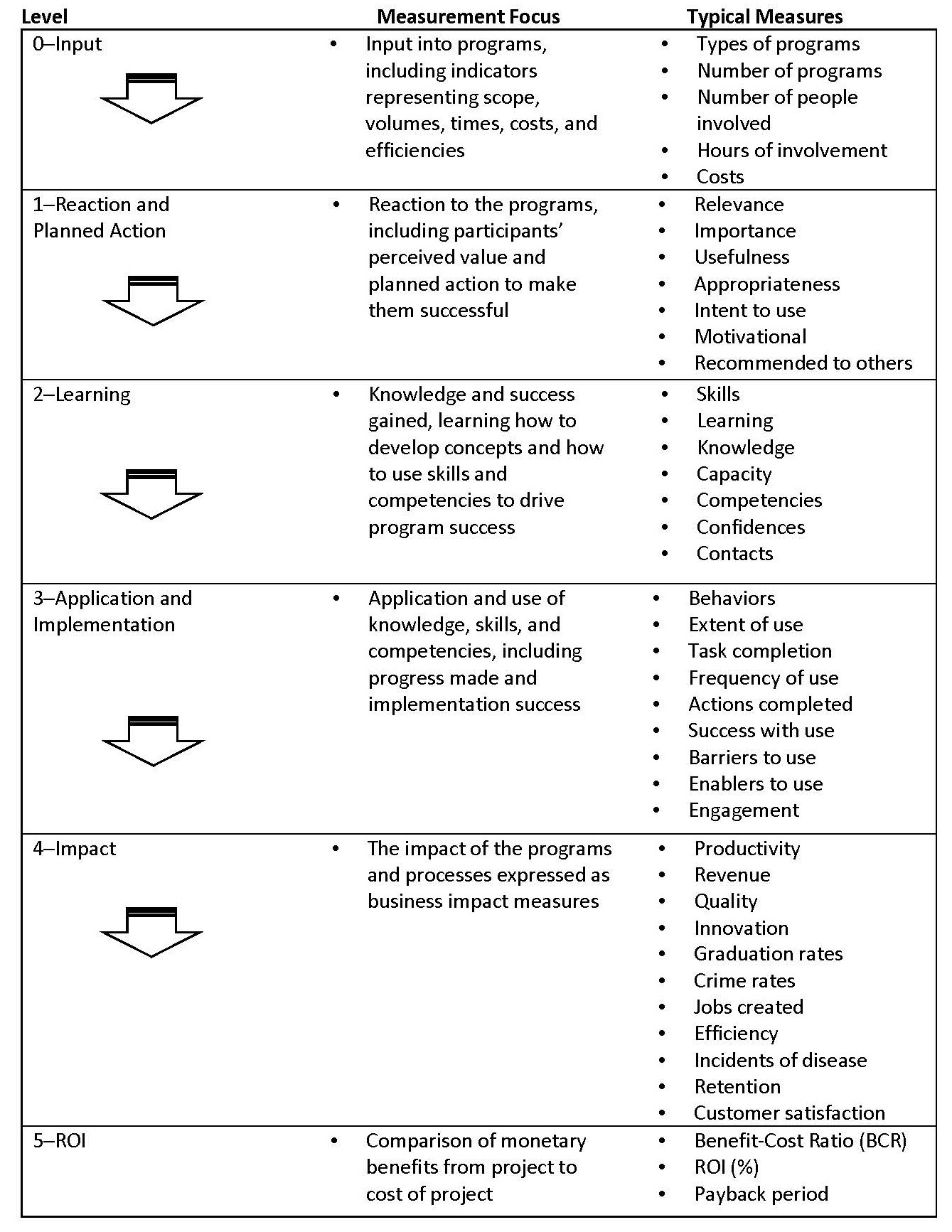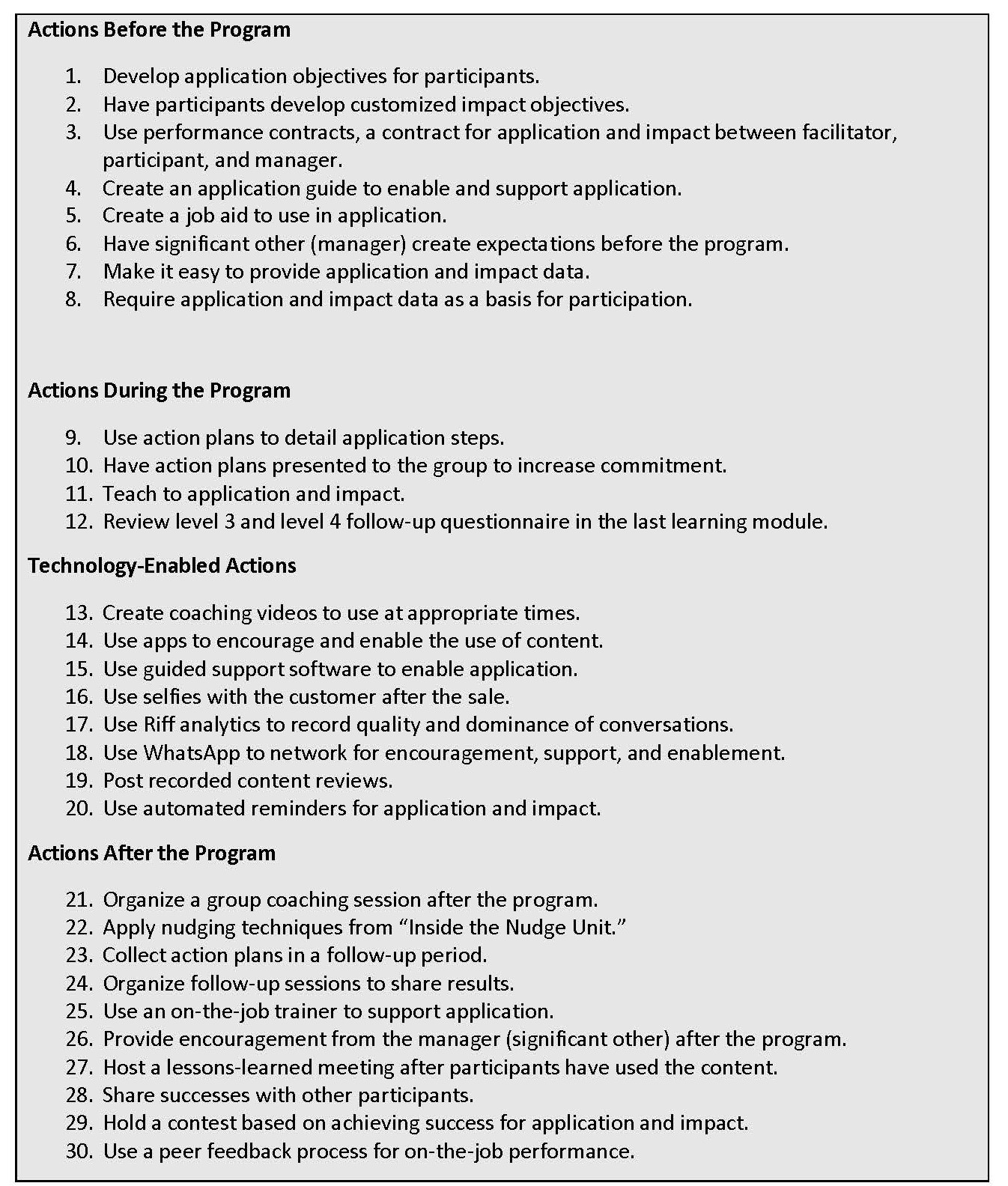Your cart is currently empty!
Linking Hybrid Learning to the Business
Patti P. Phillips, Ph.D. and Jack J. Phillips, Ph.D.
As the COVID-19 pandemic subsides, most learning programs have shifted to hybrid formats, at least for the short term. Although the definition of hybrid learning can vary, it usually describes learning where some of the participants are online in a virtual format, while other participants are in person at the same time. Program funders and sponsors are approaching this situation with a critical eye. Is it working? This situation has created the need for program owners to design and implement hybrid learning with the desired outcomes in mind and ensure that they are working and delivering the desired results.
The Problem
It’s the virtual component that may create the problem. Studies show that many virtual learning programs break down when measured at the application level (participants not using what they learn) and impact level (the business impact connected to application). In polls with L&D webinar participants, the vast majority (about 90%) suggest that participants in virtual learning are not using what they have learned. Fortunately, L&D professionals can avoid this breakdown. To secure the support and funding that virtual learning needs, the programs must deliver business results. This article will explore how designers, developers, providers, and program owners can design virtual learning (and hybrid learning) to deliver outcomes at the application, impact, and ROI levels.
The Chain of Value is Always There
It is important to understand how success is achieved with hybrid learning or any types of learning for that matter. How do you deliver more productivity, improve quality, have more innovation, or be more responsive to customers? Hybrid learning can easily provide this if it is connected to the business measure in the beginning, the right solution is implemented, and it’s designed to deliver the impact results. More importantly, the amount of improvement in the impact measures caused by the program can always be pinpointed. The success follows a chain of value, outlined in Figure 1.
Figure 1. The Value Chain for Hybrid Programs

Why It Breaks Down
ROI Institute has had the opportunity to evaluate virtual learning for many years and have compared instructor-led learning with eLearning, often in parallel, to see the differences. What has been found is that virtual learning typically breaks down at Level 3 (Application) and Level 4 (Impact), but it doesn’t have to be that way. Why does the virtual component breakdown? Here are a few reasons:
Multitasking Inhibits Learning
Virtual learning attracts multitasking. The research shows that multitasking reduces a participant’s ability to learn.1 There is a myth that a person can multitask and still absorb in-depth knowledge and information. That doesn’t happen. With instructor-led learning, multitasking is better controlled in many ways.
Manager’s Support is Usually Missing
Participants typically leave their work areas to attend in-person learning programs. Their managers know they are involved, and the manager is likely to be involved in the decision for them to participate in the session. The manager creates expectations for the program. With this scenario, it is in the managers’ best interest for the learning to translate into something useful and worthwhile for the department. Because of this, the managers are often involved before the program with setting goals and then after the program with following-up. For the virtual learning component, the manager may not be involved. For the most part, the manager may not even know that participants are involved. This is because most virtual learning usually occurs during regular work hours at home or in the participant’s daily environment, and the manager may often not even be aware of it. Without the manager’s involvement, the most significant influencer for transferring learning to the job is removed.
Virtual Programs Are Designed for Learning, Not Application and Impact
Instructional systems designers design virtual programs to deliver learning. Designers think their work is complete when the participant has learned knowledge or skills. However, the executives who provide the budget want to see the business connection from participants actually using the learning. For example, very few virtual learning programs have impact objectives. Without impact objectives, some key stakeholders may not fully understand why the program is being implemented. When impact objectives are in place, the team can design the program for application and the desired business impact.
Technology Failures
Technology failures and connection problems routinely appear in the best virtual learning in the best of organizations. Add to this, Zoom fatigue. The challenge to instructional designers is to make it seamless, as easy as possible, and anticipate and manage failures that occur far too often. For an in-person program, this type of failure rarely occurs or can easily be adjusted. The good news is that instructional designers and technology providers are working on this.
How to Make it Work
In our work at ROI Institute, we have been involved in thousands of ROI studies, with many of them in the learning and development space. In the last two decades, we have been involved in the evaluation of many virtual, in-person, and blended learning programs. We have had the opportunity to see what works well and what does not.
In every one of our evaluations, we collect data on barriers and enablers. The barriers are the things that get in the way of the participant having success with the program. The enablers are the factors in play that help to achieve the success of the program. As you can imagine, these enablers present tremendous opportunities to see what can be done to enhance application and impact. The barriers tell us what we need to remove or minimize to have success and create an opportunity to design for success in the future. The enablers provide us with proven techniques that have already actually worked and proof that they made a difference in application and impact.
From an organizational perspective, if application does not occur, the program is a waste. Some people refer to this as scrap learning (learning that is not used, although the sponsors, supporters, and funders want it to be used and to have an impact). Figure 2 presents 30 techniques that can enhance the application and impact of hybrid learning programs, for both the in-person portion and the virtual portion.
Figure 2. Techniques to Design Learning to Deliver Application and Impact

These techniques are appropriate for hybrid learning, virtual learning, in-person learning, blended learning, eLearning, and mobile learning. You get the picture. They are proven strategies to design for, and deliver, application and impact. Using a dozen techniques can make a significant difference in the outcomes.
To know if it’s working you have to evaluate major programs at the application, impact, and sometimes, ROI levels. Figure 3 represents a system that was designed to deliver and measure results at these levels.2 For a case study to see how this is accomplished, see our publication Measuring the Success of Learning Through Technology.3
Figure 3. The ROI Methodology
 The 12 steps in the ROI Methodology are logical and systematic, representing an enhanced logic model. For a copy of our guide, “Thirty Techniques to Design Virtual Learning to Deliver Impact and a Positive ROI,” contact us at ROI Institute. This document contains more detail on the thirty techniques. Finally, contact us if you would like to have a conversation about delivering more results from hybrid learning.
The 12 steps in the ROI Methodology are logical and systematic, representing an enhanced logic model. For a copy of our guide, “Thirty Techniques to Design Virtual Learning to Deliver Impact and a Positive ROI,” contact us at ROI Institute. This document contains more detail on the thirty techniques. Finally, contact us if you would like to have a conversation about delivering more results from hybrid learning.
References
- Zack, Devora. Singletasking: Getting More Done—One Thing at a Time. Oakland, CA: Berrett-Koehler Publishers, 2015.
- Phillips, Patricia Pulliam, and Jack J. Phillips. ROI Basics 2nd Edition. Alexandria, VA: ATD Press, 2019.
- Elkeles, Tamar, Patricia Pulliam Phillips, and Jack J. Phillips. Measuring the Success of Learning Through Technology: A Step-by-Step Guide for Measuring Impact and Calculating ROI on E-Learning, Blended Learning, and Mobile Learning. Alexandria, VA: ASTD Press, 2014.
This article was originally published on February 27, 2022, on CLO.com.


























